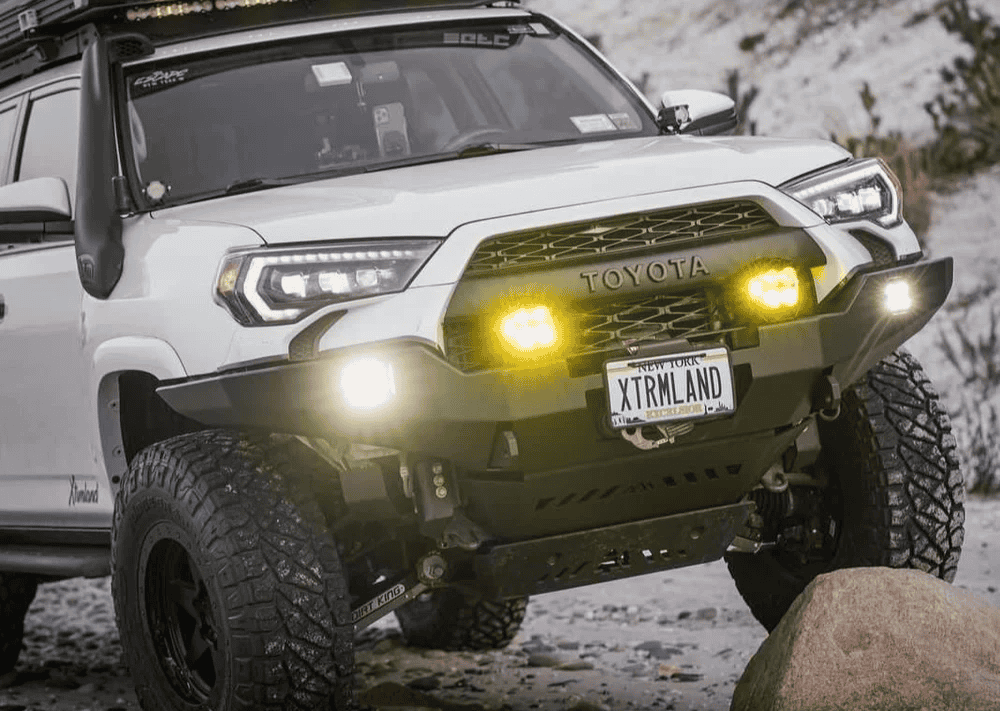Overland Vehicles

Starlink needs a broad, unobstructed view of the sky to deliver stable bandwidth. For most users in North America, aim the dish toward the northern sky and keep it away from trees, roof boxes, and solar panel shadows. Even partial obstruction can trigger packet loss, so it is smart to test a few parking orientations at your campsite and favor the clearest open patch of sky.
Mount height helps but is not everything. A dish elevated a few inches above a roof rack crossbar often clears nearby clutter without raising wind load dramatically. If you camp in forests, a portable mast or hitch pole that moves the antenna away from the vehicle can outperform a fixed roof position. In winter climates, built in dish heating can shed frost, but you still want airflow under the mount so meltwater drains cleanly.
Vibration and gusts affect more than comfort; they can shake signal acquisition. Choose a Starlink antenna mount that limits flex and avoids long unsupported spans. On tall vans, crosswinds can create surprising uplift. A low profile bracket, close to the rack plane, generally handles buffeting better than a tall pedestal.
Start your layout with a sky check. Stand on the roof or a ladder and scan your most common camping horizon. Favor the quadrant with the fewest obstructions, then reserve that zone for the dish and route solar, fans, or cargo to other areas. If you often park in cities, consider a location you can reach from a ladder for quick removal when garages or low branches appear.
Fast highway air can push on any exposed dish. Keep the mount compact, use stout brackets, and confirm your roof rack crossbars and side rails are torqued to spec. Add thread locker where appropriate and inspect fasteners regularly during seasonal checks.
Roof rack plates are the most common solution for a Starlink antenna mount on adventure vans. They bolt into rack channels or crossbars and present a flat, stable surface. Quick release plates that let you stow the dish inside while driving are popular for travelers who want minimal drag on interstates. Ladder mounts are another choice, keeping the dish low and reachable for daily set up. Hitch poles add reach and can place the dish away from tall roofs or tree edges for better sky view.
Magnetic bases work on steel surfaces but need spotless paint, strong hold strength, and safety tethers. They are better for short stops than long haul travel. Permanent roof penetrations are possible, but most builders avoid extra holes by using rack channels and purpose built brackets. When no rack exists, inside out gland fittings and reinforcement plates spread loads and protect thin sheet metal.
Use marine grade stainless hardware and mount plates that match your rack material to reduce galvanic corrosion. Add isolators between dissimilar metals and seal any penetrations with UV stable sealant. Cable routing matters as much as the bracket. Avoid tight bends, sharp edges, and hot exhaust paths. A purpose built cable gland with strain relief keeps water out and prevents chafe.
Permanent mounts are convenient for frequent users who camp in open spaces. Quick release systems shine when you weave through trees, garages, or ferries. If you pick quick release, test your stow routine. You should be able to detach, coil the cable, and secure the dish in minutes without tools.
Enter the cabin through a gland or factory pass through rather than a window gap. Protect the cable with abrasion sleeves where it crosses rack edges. Inside the vehicle, secure the run along furniture or wall panels to keep it off the floor and away from sliding cargo.
When your travel plans demand dependable connectivity, a well designed Starlink antenna mount becomes part of the vehicle system, like solar, vents, and racks. Aim for a plan that sequences those components together, so the dish has clean sky, the panels get sun, and nothing steals space from anything else. If you are building an overland truck or a long range van, consider how you will store the dish in motion, route the cable near your workstation, and power the router from your house battery system.
If you want a full mount and install handled end to end, our team can help. We engineer brackets, secure hardware to your rack or ladder, and route cables through sealed entries with proper strain relief. Pair a Starlink antenna mount with rack systems, lighting, and power management for a tidy, quiet setup that survives dusty roads and winter slush.
We build and install mounts for adventure vans, overland trucks, and towable campers, all under one roof in Fayetteville. Tell us how you travel, where you camp, and what you carry on top. We will map the sky view, pick the right bracket, route the cable cleanly, and deliver a mount that just works when you need it most.
Ready for dependable internet wherever you park. Book a Starlink antenna mount and installation with OZK Customs. Our team designs secure mounts, routes cabling cleanly, and integrates power with your build plan. Tell us how you travel and we will engineer the right solution.
ADDRESS:
6159 E Huntsville Rd, Fayetteville, AR 72701
PHONE:
(479) 326-9200
EMAIL:
info@ozkvans.com